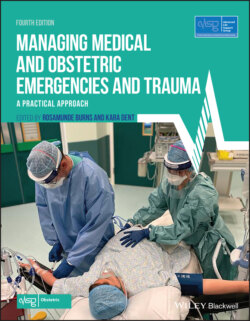Читать книгу Managing Medical and Obstetric Emergencies and Trauma - Группа авторов - Страница 149
7.8 Further reading
Оглавление1 Acosta CD, Kurinczuk JJ, Lucas DN, Tuffnell DJ, Sellars S, Knight M ; United Kingdom Obstetric Surveillance System. Severe maternal sepsis in the UK, 2011–2012: a national case–control study. PLoS Med 2014; 11(7): e1001672.
2 Bonet M, Pileggi VN, Rijken MJ, et al. Towards a consensus definition of maternal sepsis: results of a systematic review and expert consultation. Reprod Health 2017; 14(1): 67.
3 Knight M, Bunch K, Tuffnell D, et al (eds) on behalf of MBRRACE‐UK. Saving Lives, Improving Mothers’ Care – Lessons Learned to Inform Maternity Care from the UK and Ireland Confidential Enquiries into Maternal Deaths and Morbidity 2015–17 . Oxford: National Perinatal Epidemiology Unit, University of Oxford, 2019.
4 Knowles SJ, O’Sullivan NP, Meenan AM, Hanniffy R, Robson M . Maternal sepsis incidence, aetiology and outcome for mother and fetus: a prospective study. BJOG 2015; 122 (5): 663–71.
5 Kourtis AP, Read JS, Jamieson DJ . Pregnancy and infection. N Engl J Med 2014; 370: 2211–18.
6 NICE (National Institute for Health and Care Excellence). Sepsis: Recognition, Diagnosis and Early Management. NG51. London: NICE, 2016.
7 Singer M, Deutschman CS, Seymour CW, et al. The Third International Consensus Definitions for Sepsis and Septic Shock (Sepsis‐3). JAMA 2016; 315(8): 801–10.
8 Surviving Sepsis campaign: http://www.survivingsepsis.org (last accessed January 2022).
9 Turner MJ . Maternal sepsis is an evolving challenge. Int J Gynecol Obstet 2019: 146: 39–42.
